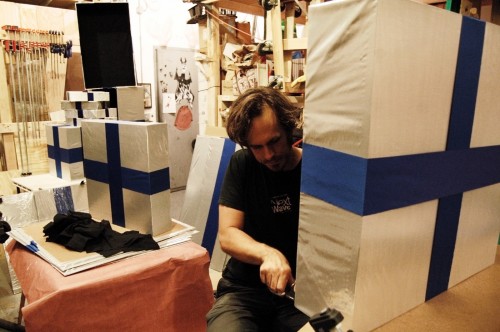This past week, we learned that Gordon Billings, a UK props master, died from exposure to asbestos. Billings had suffered from shortness of breath and coughing for awhile, and passed away from lung cancer this past August. It was not until last week that the coroner issued his ruling that Billings’ death was due to asbestos exposure.
As a props master, Billings worked on films such as Empire of the Sun and TV series like The Sweeney. Part of his job was sweeping dust and debris from derelict buildings used as sets. Before his death, he had made a witness statement that he was not aware he was being exposed to asbestos.
As props people, we may be exposed to toxins, poisons and harmful chemicals on a daily basis. We may not even be aware of what we are exposing ourselves to. The harm from some of these chemicals may not manifest themselves for years, or even decades, after being exposed.
We may be smart about the particularly nasty chemicals; the ones that smell really bad and that have warnings all over their labels. But those chemicals that we only use once or twice a year may not cause as much harm as those which we subject ourselves to every day. Many harmful chemicals do not even have an odor, or give an indication that we are being exposed. As with Billings, you cannot tell whether you are breathing asbestos or whether you are just inhaling dust. The two-part polyurethanes we use in molding and casting have little to no odor, yet can be some of the more toxic chemicals you come into contact with in a props shop. Cleaners such as Simple Green or any of the “natural” cleaners which have “Orange” in the name can actually contain chemicals which cause reproductive problems, organ damage and even cancer, if you use them without gloves or adequate ventilation. The list goes on.
Protecting yourself from harmful exposure to chemicals is one area of safety where you cannot rely on assumptions or so-called “common sense”. Adequate protection can only come from gathering as much information about the products you use, and building the correct safety infrastructure to deal with them.
For every product in your props shop, you should have an MSDS which lists all hazardous ingredients and what safeguards should be taken. You can also find MSDS for the individual ingredients if you wanted more information. Websites such as the Chemical Abstracts Service and Toxipedia can guide you to more information about various chemicals. And, of course, Monona Rossol’s book, The Health and Safety Guide for Film, TV, and Theater is a must-read for anyone working in our industry.
It is one of the great downfalls of our industry that this kind of information is not taught as consistently or in-depth as it needs to be. Even when the desire to have a safe workplace is there, the knowledge of what that means, or the funds to make that happen are often lacking. A visit from OSHA can certainly point out all the dangers in a shop space, but the fear is that the company will be hit with steep fines or even shut down. One of my dreams is to have some kind of funded organization that could audit shop spaces for their safety infrastructure without fear of being reported, and train employees in proper safety procedures. The larger companies can already do this, as can areas with strong union presences, but there still exists so many smaller theatres and ad hoc film production companies with practically no knowledge of safety. Colleges and universities also suffer greatly from a lack of proper precautions, and these are training the next generation of technicians and managers.
Until that happens, it is up to each of us to protect ourselves. Know what chemicals and hazards you are dealing with. You do not want to devote your entire life working like Gordon Billings, only to spend your last years on Earth suffering from health problems.






